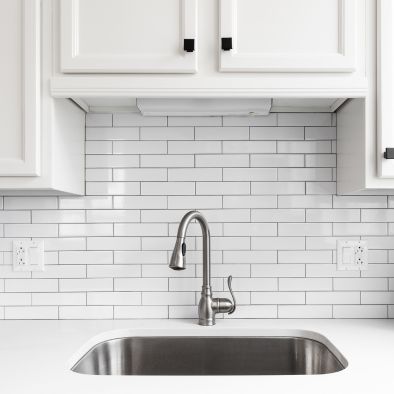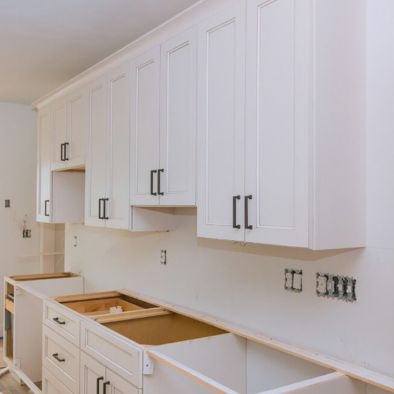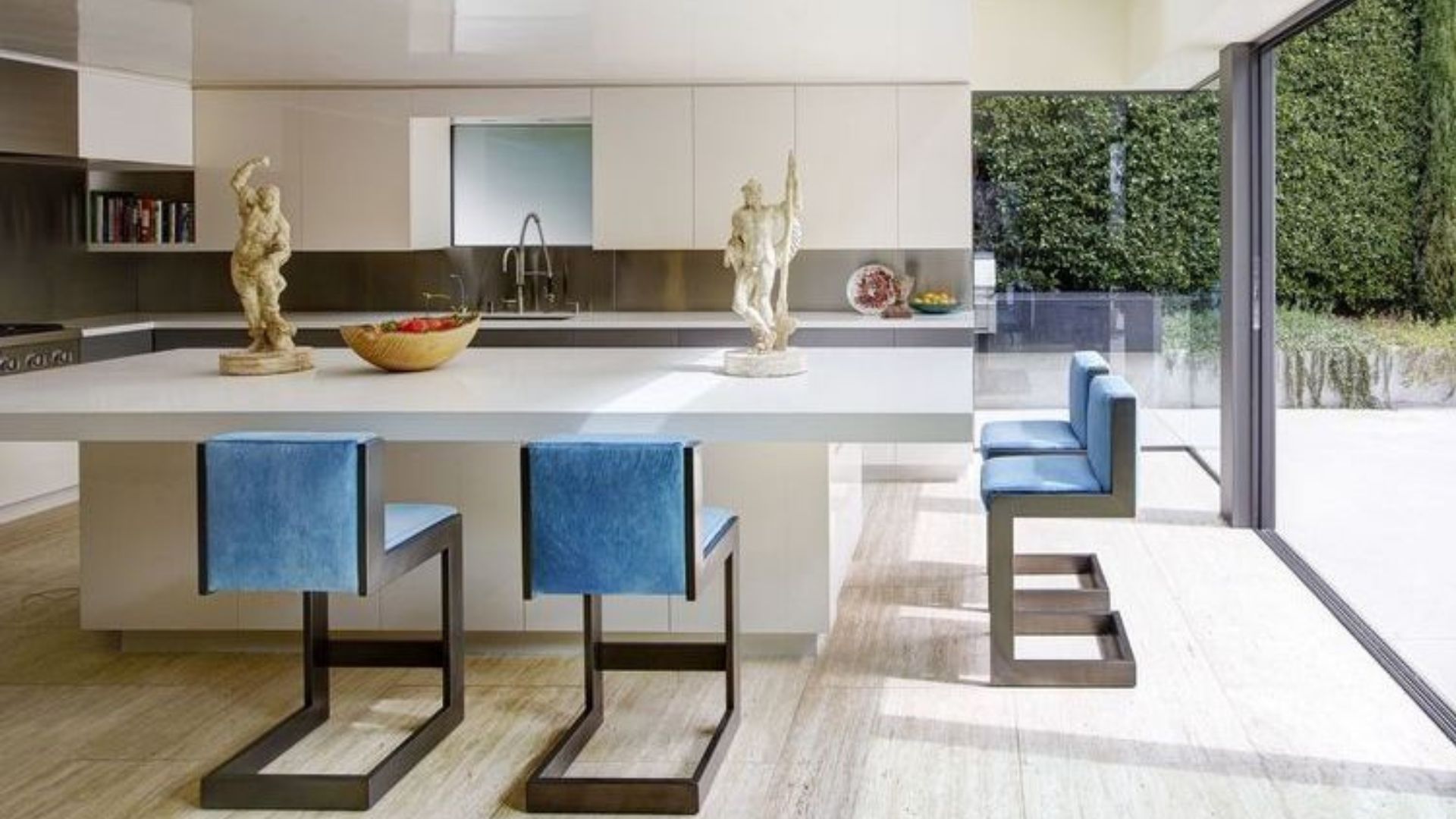Planning a home remodeling project can be thrilling, but it can also be a source of anxiety. This article will guide you through the steps to plan and execute your home remodeling journey successfully. From understanding cost factors to maximizing ROI and selecting the best materials and contractors, we’ll cover everything you need to know. Whether you’re renovating to sell or to stay, our insights will help you make the best decisions to save money, time, and effort in the long run, providing you with a sense of security in your choices.
Home Remodeling vs. Home Renovation
Home remodeling and renovation may sound similar, but they involve different levels of change and investment.
Remodeling involves transformative changes, such as knocking down walls or reconfiguring rooms, and it often has higher costs and longer timelines. It’s ideal for those seeking significant alterations to their home’s layout or functionality.
Renovation focuses on refreshing and updating existing structures, like painting walls or replacing fixtures, without altering the layout drastically. It’s a cost-effective option, with less disruption to daily life and opportunities to enhance energy efficiency.


Main Benefits Of Home Remodeling
Home remodeling offers numerous benefits for homeowners:
- It enhances your quality of life by creating a comfortable and functional living space that promotes well-being.
- Remodeling with modern materials and appliances can boost energy efficiency, reducing your carbon footprint and utility bills.
- Investing in remodeling can increase your home’s market value, providing a sound financial return.
Home remodeling is worthwhile whether you want to improve your living space, save on energy costs, or boost your property’s resale value.
Key 4 Steps To Follow For a Successful Home Remodeling
For successful home remodeling, homeowners should follow critical steps to ensure a smooth process:
- Detailed planning is essential to define goals and establish a clear plan, including design, materials, and timelines.
- Effective budget management is crucial to avoid unexpected costs.
- Choosing the right contractor is paramount for project success.
- Expect the unexpected and prepare for potential delays or budget overruns during renovation.
Why You Should Remodel Your Home?
Home remodeling can better transform your living space to suit your needs and lifestyle. Whether you’re looking to add more space, upgrade your kitchen or bathroom, or improve energy efficiency, remodeling offers a range of benefits. You can create a customized floor plan that enhances functionality and comfort by investing in upgrades like new cabinets, countertops, and fixtures. Additionally, remodeling can increase the resale value of your home, making it a smart long-term investment. Many compelling reasons exist for a home remodel, from creating more space to boosting energy efficiency.
Choosing the Right Material
Consider important factors like style, durability, maintenance, budget, and environmental impact while planning for your home remodeling. Whether you’re renovating your kitchen, living room, or bedroom, your chosen materials should reflect your style and complement your home’s overall aesthetic. Opt for durable materials like hardwood or ceramic tiles to ensure longevity and minimize the need for frequent replacements. Consider the maintenance requirements of each material; some may need more upkeep than others, such as quartz countertops. Lastly, set a realistic budget and choose materials that fit your financial constraints.
Average Cost of Home Remodeling
Average Cost of Home Remodeling Per Square Feet
On average, remodeling a house costs between $15 to $60 per square foot. Yet, this cost escalates notably for kitchen or bathroom renovations. Typically, remodeling a bathroom or kitchen can range from $100 to $250 per square foot, contingent on location, size, and the material’s quality.
National Average Cost of Home Remodeling
The national average cost of home remodeling stands at $58,126, as per the 2024 Cost vs Value Report by Remodeling magazine. Costs vary depending on the type of project, with the highest average cost being $339,513 for an Upscale Primary Suite Addition and the lowest being $2,355 for Entry Door Replacement with Steel. Kitchen remodeling at the midrange averages around $27,492, while bath remodeling at the midrange is approximately $25,251.
| PROJECT | JOB COST |
| Entry Door Replacement | Steel | 2355 |
| Garage Door Replacement | 4513 |
| Manufactured Stone Veneer | 11287 |
| Grand Entrance | Fiberglass | 11353 |
| Siding Replacement | Vinyl | 17410 |
| Deck Addition | Wood | 17615 |
| HVAC Conversion | Electrification | 18800 |
| Siding Replacement | Fiber-Cement | 20619 |
| Window Replacement | Vinyl | 21264 |
| Deck Addition | Composite | 24206 |
| Bath Remodel | Midrange | 25251 |
| Window Replacement | Wood | 25799 |
| Minor Kitchen Remodel | Midrange | 27492 |
| Roofing Replacement | Asphalt Shingles | 30680 |
| Bath Remodel | Universal Design | 40750 |
| Roofing Replacement | Metal | 49928 |
| Bathroom Addition | Midrange | 58586 |
| Bath Remodel | Upscale | 78840 |
| Major Kitchen Remodel | Midrange | 79982 |
| Bathroom Addition | Upscale | 107477 |
| Major Kitchen Remodel | Upscale | 158530 |
| Primary Suite Addition | Midrange | 164649 |
| Primary Suite Addition | Upscale | 339513 |
Cost of Home Remodeling By Room
Bedrooms are often the most budget-friendly, typically requiring new paint, flooring, and design touches, with costs ranging from $1,200 to $6,000. Conversely, bathrooms tend to be pricier due to fixture changes, with renovations costing between $2,500 and $30,000.
Living rooms fall in the middle range, with remodels ranging from $2,200 to $16,000, while kitchens are the most expensive, averaging $12,000 to $60,500.
Basements offer a wide range of costs, from $4,700 to $41,000, depending on the desired finishing level. Often transformed into living spaces, garages have renovation costs averaging $3,000 to $30,000.
Factors that impact home remodeling costs
Home remodeling costs can vary widely depending on several factors. The area where you live, the size and complexity of your remodel, and the quality of materials are all key considerations. Factors such as remodeling contractor rates, your unique requirements, and plumbing and electrical work can also impact costs. Unexpected damages or structural changes to the layout can also add to the overall expenses. The complexity and size of your project are often the most significant factors determining remodeling costs, so it’s essential to plan carefully and budget accordingly.
How to Find The Best Home Remodeling Contractors?
When hiring a remodeling contractor, follow this checklist and consider these essential tips:
- Get Multiple Estimates: Obtain written estimates from at least three contractors and compare them thoroughly.
- Hire Local, Licensed Contractors: Opt for contractors familiar with local building codes who are more accessible to contact if issues arise.
- Check Their Past Work: Inquire about their experience, reputation, and years in business, and check references thoroughly.
- Take Your Time Making a Sound Decision: Don’t rush into a decision; be cautious of high-pressure tactics.
- Check Their Insurance and Bonding: Ensure they’re properly insured and bonded, and verify coverage with their insurance company.
- Get Everything in Writing: Secure a comprehensive contract outlining the scope of work, payment schedule, and guarantees.
- Understand Your Right to Cancel: Be aware of your rights regarding contract cancellation and follow applicable rules.
- Don’t Pay Upfront: Avoid paying for the entire project before it’s completed, and retain cashed checks as receipts.
How to Save Money On Home Remodeling Costs?
Start by gathering multiple quotes from different contractors to find the best deal for your project.
Consider tackling some tasks yourself, like demolition, to cut down on labor costs. One effective way to stick to your budget without sacrificing quality or style is by opting for cheaper materials that mimic expensive ones, such as laminate flooring instead of hardwood. This allows you to maintain the desired look of your home while saving money.
To save on plumbing expenses, avoid moving sinks or toilets and opt for open shelving in the kitchen instead of costly cabinets.
Home Remodeling To Stay vs. To Sell
Home Remodeling To Stay
When deciding whether to remodel your home, it’s essential to consider whether you’re remodeling to stay or sell. If you’re remodeling to stay, focus on enhancing functionality by upgrading cabinets, counters, appliances, and fixtures. Consider customizing your floor plan to suit your lifestyle needs better and improving energy efficiency with new windows, doors, insulation, and climate control systems.
For example, if you need a busy kitchen, you should consider quartz countertops for your kitchen countertop for durability, longevity, and appearance rather than marble countertops for statement.
Additionally, adding space can enhance your comfort and accommodate changing family needs. By remodeling with a focus on staying, you can create a more enjoyable and functional living environment tailored to your specific preferences and requirements.
Remodel To Stay
When considering home remodeling to sell, focus on maximizing ROI and enhancing the property’s appearance to attract potential buyers. Particular renovations yield higher returns on investment (ROI) than others. For instance, a Garage Door Replacement can recoup up to 193.9% of its cost, while an Entry Door Replacement in Steel can recoup around 188.1%. Small kitchen remodeling is in the midrange category, with an ROI of approximately 96.1% of its cost.
These projects add value to your home, making it more appealing to prospective buyers. Importantly, they can potentially result in a quicker sale at a higher price, giving you hope for a successful outcome.
Top Ten Highest ROI Remodeling Projects
Here are the top ten Highest Return on Investment (ROI) home remodeling projects in percentage according to the research report by Remodel Magazine.
| PROJECT | COST RECOUPED |
| Garage Door Replacement | 193.90% |
| Entry Door Replacement | Steel | 188.10% |
| Manufactured Stone Veneer | 153.20% |
| Grand Entrance | Fiberglass | 97.40% |
| Minor Kitchen Remodel | Midrange | 96.10% |
| Siding Replacement | Fiber-Cement | 88.40% |
| Deck Addition | Wood | 82.90% |
| Siding Replacement | Vinyl | 80.20% |
| Bath Remodel | Midrange | 73.70% |
| Deck Addition | Composite | 68.20% |
Conclusion – Home Remodeling
In short, home remodeling is a multifaceted process that requires careful planning and consideration. By following the steps outlined in this article, homeowners can confidently navigate the complexities of remodeling. From understanding cost factors and maximizing ROI to selecting the best materials and contractors, each decision plays a crucial role in achieving the desired outcome. Whether remodeling to sell or stay, the ultimate goal is to enhance the home’s functionality, aesthetics, and value while saving money, time, and effort in the long run. With proper planning and attention to detail, homeowners can embark on their remodeling journey with peace of mind and certainty of success.
